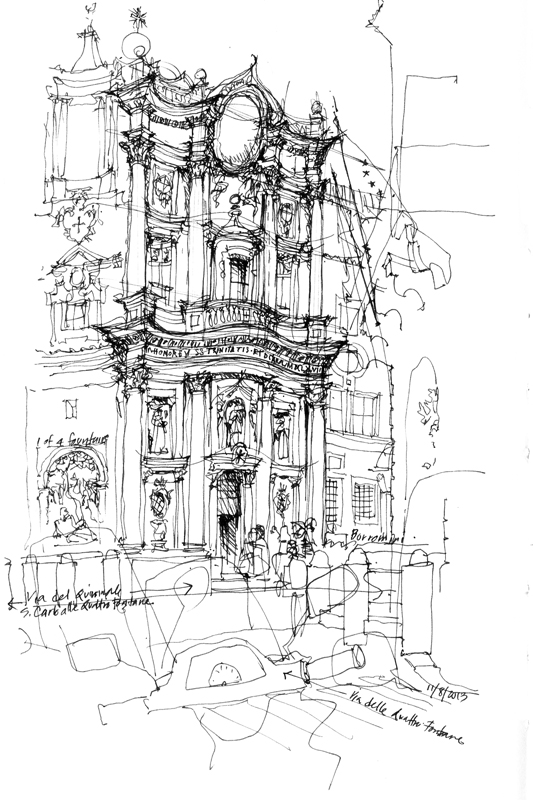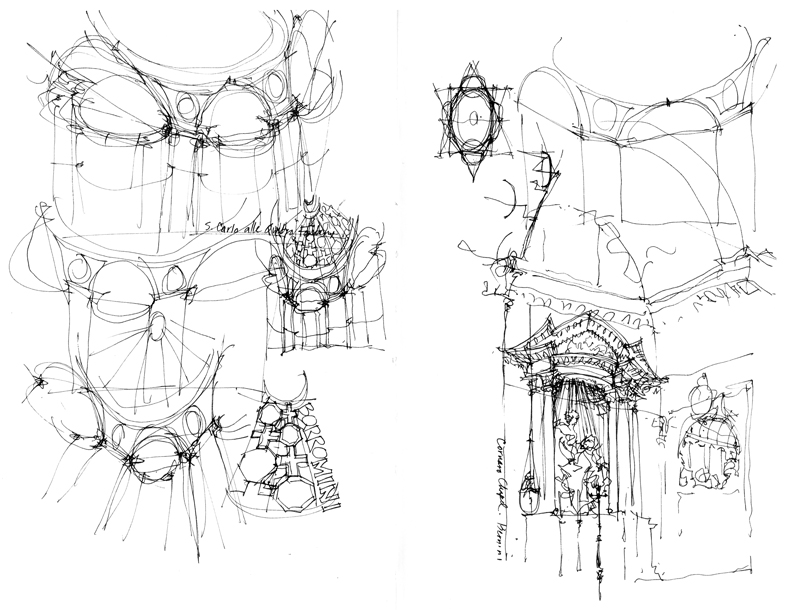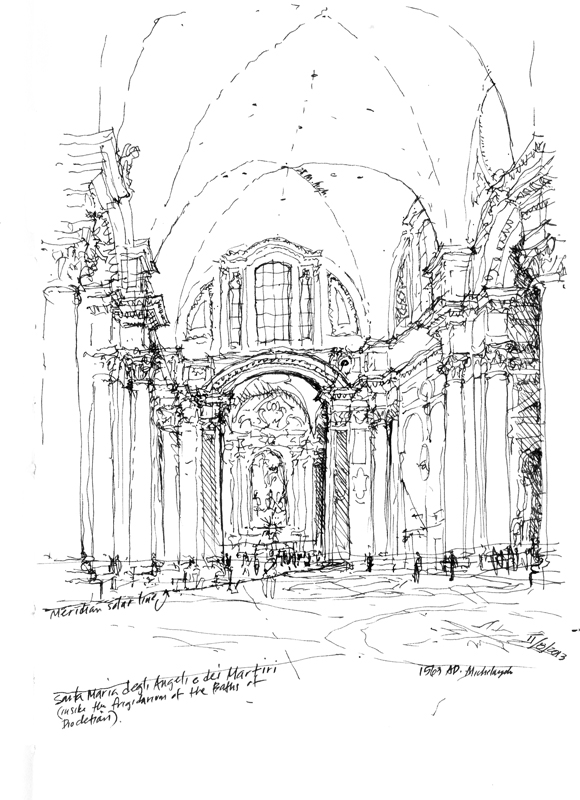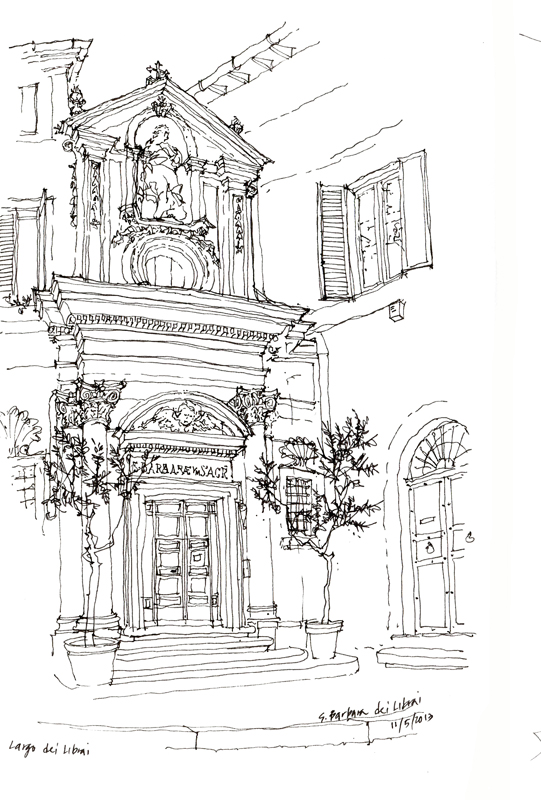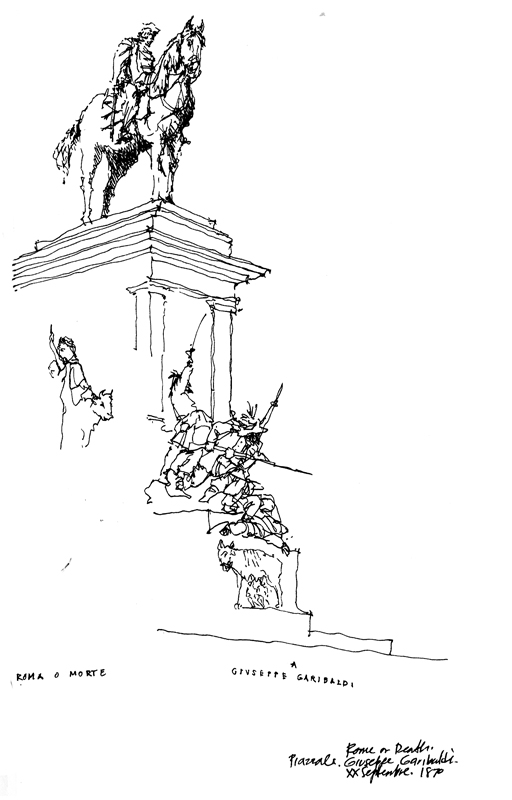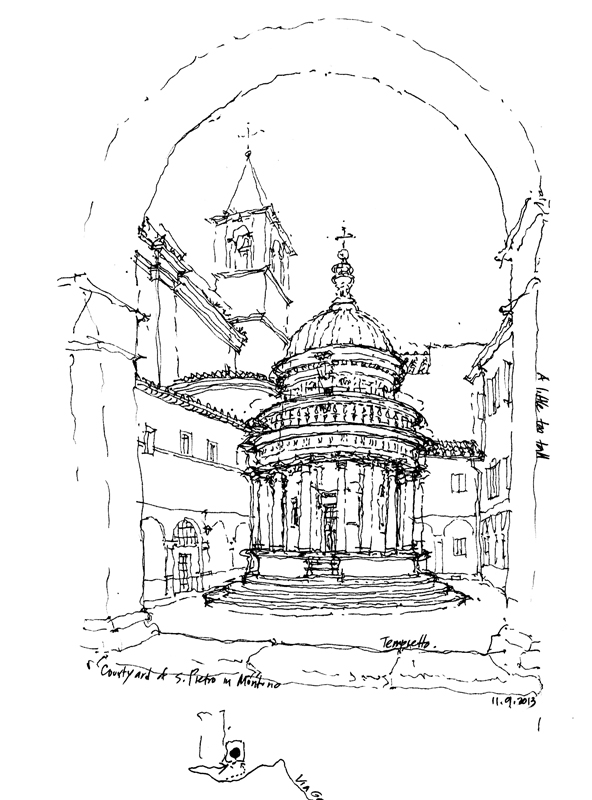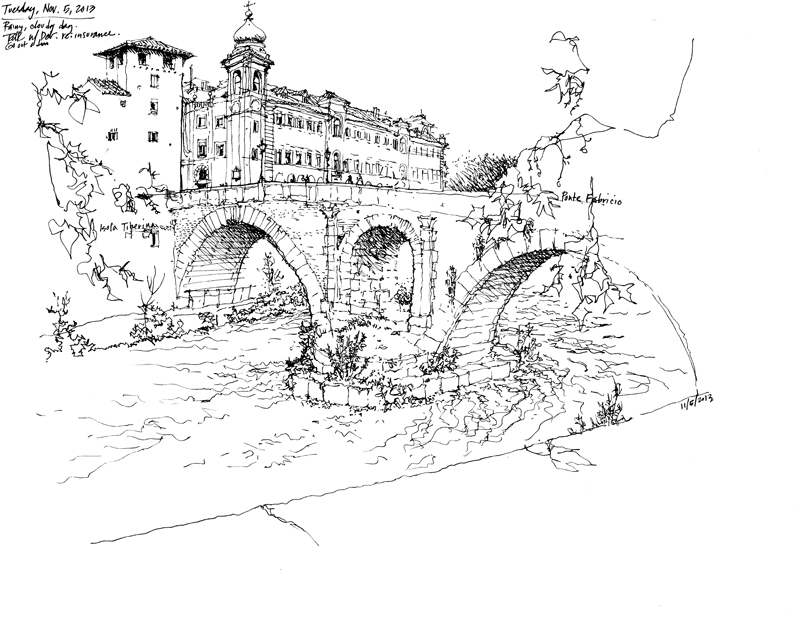Designed by Francesco Borromin, San Carlo alle Quattro Fontane is an iconic masterpiece of Baroque architecture, built in the 17th century as part of a complex of monastic buildings on the Quirinal Hill, at the southwest corner of the intersection of of Via XX Septembre and Via delle Quattro Fontane. Four fountains (Quattro Fontane) mark the corners of the now narrow and busy intersection. It’s difficult to capture the complex nature of the undulating facade as it weaves its way across the two-story, three-bay structure, with smaller columns framing niches, windows, and sculptures.
These are a few quick sketch studies of the interior. While initially appearing to be complex, the spatial geometry can be understood with just a little bit of analysis.
Just down the street from San Carlo alle Quattro Fontane is Sant’Andrea al Quirinale, another important work of Baroque architecture, designed by Gian Lorenzo Bernini, and the third Jesuit church built in Rome, after the Church of the Gesú and Sant’Ignazio. The reason for the grayed out area is that I had decided to draw this view over two pages already filled with notes I had taken of student design projects.

